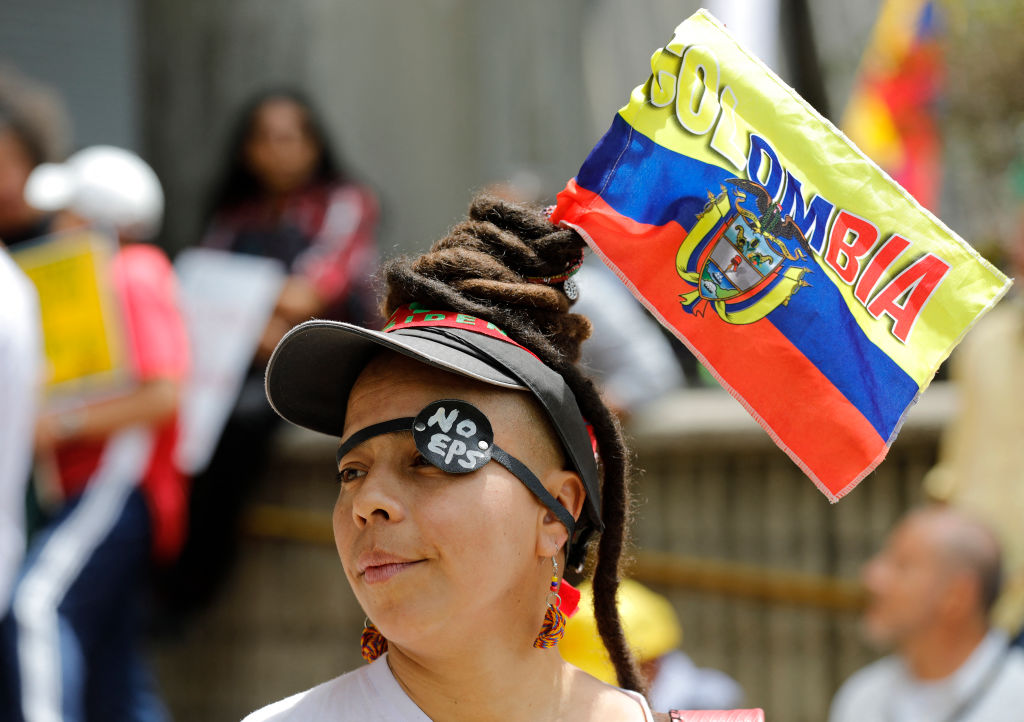Bogota Looks to Beijing for Infrastructure Investment
Bogota Looks to Beijing for Infrastructure Investment
Colombia and China may partner to build a 137-mile railway linking the Andean country’s Atlantic and Pacific coasts. The “dry canal” project fuels speculation that Colombia is looking beyond the United States for trade opportunities.
With trade accords between the United States and Colombia on hold, President Juan Manuel Santos told the Financial Times that Colombia and China are discussing the construction of a “dry canal” that would link the Andean country’s Pacific and Atlantic coasts. The plan would include the construction of a new port city south of Cartagena for the assembly of products for export to Central and South America, Santos said. Keeping his language tentative, the Colombian president added: “I don’t want to create exaggerated expectations, but so far it makes a lot of sense. The studies that they’ve made on the costs of transporting per ton, the cost of investment, it all works out.”
While Santos described the project as “a real proposal” that is “quite advanced,” one important detail remains to be sorted out: how will it be financed? “My ideal—and here the sky is the limit—is to attract foreign investment via concessions,” Santos said. “I’ve told the Chinese, ‘If it’s so profitable and so important, okay, come here via this mechanism of concessions.’”
The canal is one of Panama’s primary reasons for existence. The Central American country separated from Colombia in 1903 with U.S. military support during negotiations to dig the pathway through the isthmus. But the Panama Canal Authority (PCA) shows no signs of anxiety about the possibility of competition from a Colombian dry canal. Work has already begun on a $5.25 billion expansion to double the Panama Canal’s capacity, which surpassed 300 million tons of goods in 2010. Rodolfo Sabonge of the PCA told the Financial Times he is more worried about competition from U.S. rail transport because it offers faster access to the U.S. northeast.
Others wonder whether the Colombian president’s railroad talk will bear fruit. “Hopefully, Santos won’t now get distracted by some interoceanic railway dreams,” writes AS/COA’s Mateo Samper in Americas Quarterly’s blog, pointing out that Colombia would garner more benefit from infrastructure investment that connects major cities.
Whether or not the new transportation route turns out to be major competition for the Panama Canal, it highlights Bogota’s interest in deepening ties with Beijing. The project would turn Colombia into a regional gateway for the shipment of Chinese manufactured goods. “Colombia has a very important strategic position, and we view the country as a port to the rest of Latin America,” said Chinese Ambassador to Colombia Gao Zhengyue. The investment makes sense for China. The country’s need for primary materials, such as Colombian coal, is prompting Beijing to invest in infrastructure development in Latin America. China is also discussing a $7.6 billion plan to develop 492 miles of railway in Colombia and expand the Pacific port of Buenaventura.
The news was also the latest to highlight China’s expanding economic role in Latin America, and the developing world more generally. Chinese investment in Colombia topped $5 billion last year and Chinese banks loaned more money to developing countries in 2009 and 2010 than did the World Bank, according to BBC Mundo. China’s imports from Latin America surged from $5 billion to $44 billion between 2000 and 2009, while its exports to the region grew from $4.5 billion to $42 billion over the same period, according to a new Current History article by Eric Farnsworth of the Council of the Americas.
The talk of a possible dry canal led the press to speculate that the Colombian government is looking elsewhere for foreign investment and trade opportunities while the U.S. Congress continues to hold off on passing a free trade agreement that Congress has left pending since it was signed in 2006. The issue has come to head recently, when U.S. legislators let the Andean Trade Promotion and Drug Eradication Act (ATPDEA) expire on Saturday. The legislation allows nearly 90 percent of Colombian exports to enter the United States free of tariffs. U.S. Trade Representative Ron Kirk asked Congress to extend the legislation “as soon as possible and to do so for substantially more than a few months.” Total trade between Colombia and the United States amounted to $27.7 billion in 2010.
Meanwhile, China and Colombia continue to talk. Colombia has sought to join the Asia Pacific Economic Cooperation since at least 2009 because, in the words of then-Foreign Relations Minister Jaime Bermúdez, the country “is completely determined to get closer and closer to Asia.” But though the Santos administration is broadening Colombia’s foreign relations, he says he remains confident that the APTDEA will be passed soon, and he continues to view the United States as an important strategic partner. “That is nonsense,” Santos said, when asked if his administration had deprioritized relations with the United States. “I am diversifying my foreign relations, and I don’t think that’s mutually exclusive.”
Learn More:
- Mateo Samper, “Santos’ Railway Dreams,” AQ blog, February 15, 2012.
- Eric Farnsworth, “The New Mercantilism: China’s Emerging Role in the Americas,” Current History, February 2011.
- Juan Manuel Santos interview transcript and Financial Times coverage of the proposed “dry canal.”
- The Panama Canal Authority’s website.
- Office of the United States Trade Representative’s Andean Trade Preference Act web page.







